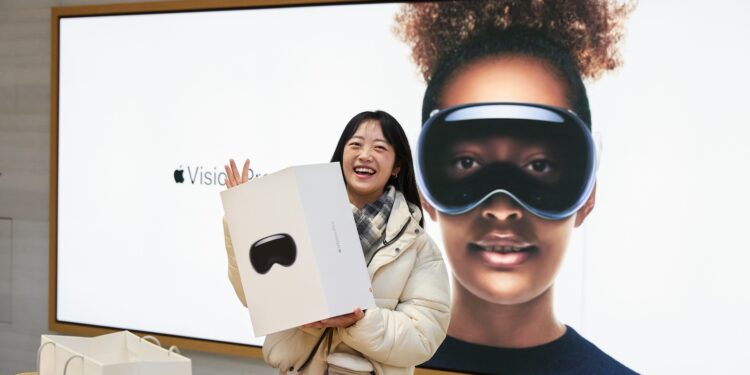Apple Vision Pro, the newest and most technologically advanced member of the Apple product family, has been a hot topic of conversation in the tech world since its launch in February 2024. With a hefty price tag of $3,500, this spatial computing device has redefined the boundaries of what is possible in virtual and augmented reality. But despite the initial excitement, a trend is now emerging that is not unknown in the industry: customer interest is waning.
Below, we take a look at why interest in Apple Vision Pro is waning, what this says about AR/VR technology, and how Apple might respond. We draw on reports from industry experts and recent market analysis to paint a comprehensive picture of the situation.
Apple Vision Pro: Decline in customer demand
According to Mark Gurman of Bloomberg, the initial enthusiasm for the Apple Vision Pro has noticeably cooledDemand for demonstrations at Apple's US stores has dropped sharply, and sales have plummeted. Sales have dropped from several units per day to just a handful per week. This has prompted Apple to step up its marketing efforts, as evidenced by the prominent placement of a huge ad for the Vision Pro on Apple's homepage.
Challenges in user retention
The main reason for the waning interest seems to be the difficulty in retaining users in the long term. The initial novelty of the device quickly gives way to the reality that daily use can be cumbersome. Inserting batteries, booting up, and navigating a complex user interface are just some of the hurdles that make traditional devices like laptops and smartphones more attractive for everyday tasks.
Missing killer application
Another critical point is the lack of a so-called "killer application" that would make the Apple Vision Pro indispensable. Without compelling content and applications that take advantage of the headset's unique capabilities, it often remains an expensive novelty for special uses, such as long flights or working from home.
Future developments
Despite these challenges, Apple continues to work on improving the product. With updates such as the introduction of Spatial Personas, Apple is trying to make the device more social and interactive. However, reaching a wider user base remains a challenge. According to analyst Ming-Chi Kuo, production of the Apple Vision Pro will remain below 400,000 units in 2024, which underlines the exclusivity of the product.
Revolution or gimmick? Challenges for the Apple Vision Pro
Apple Vision Pro is at a critical juncture. While the potential for revolutionary changes in the way we use technology is undeniable, Apple still has some significant hurdles to overcome to make the Vision Pro more than just a technological gimmick. The continued development and success of the Apple Vision Pro will depend heavily on how Apple addresses these challenges and whether it manages to improve the device's usability while simplifying the user experience. In the meantime, it will be exciting to see how the AR/VR industry evolves and whether Apple will be able to make its vision of the future of technology a reality. (Image: Apple)





